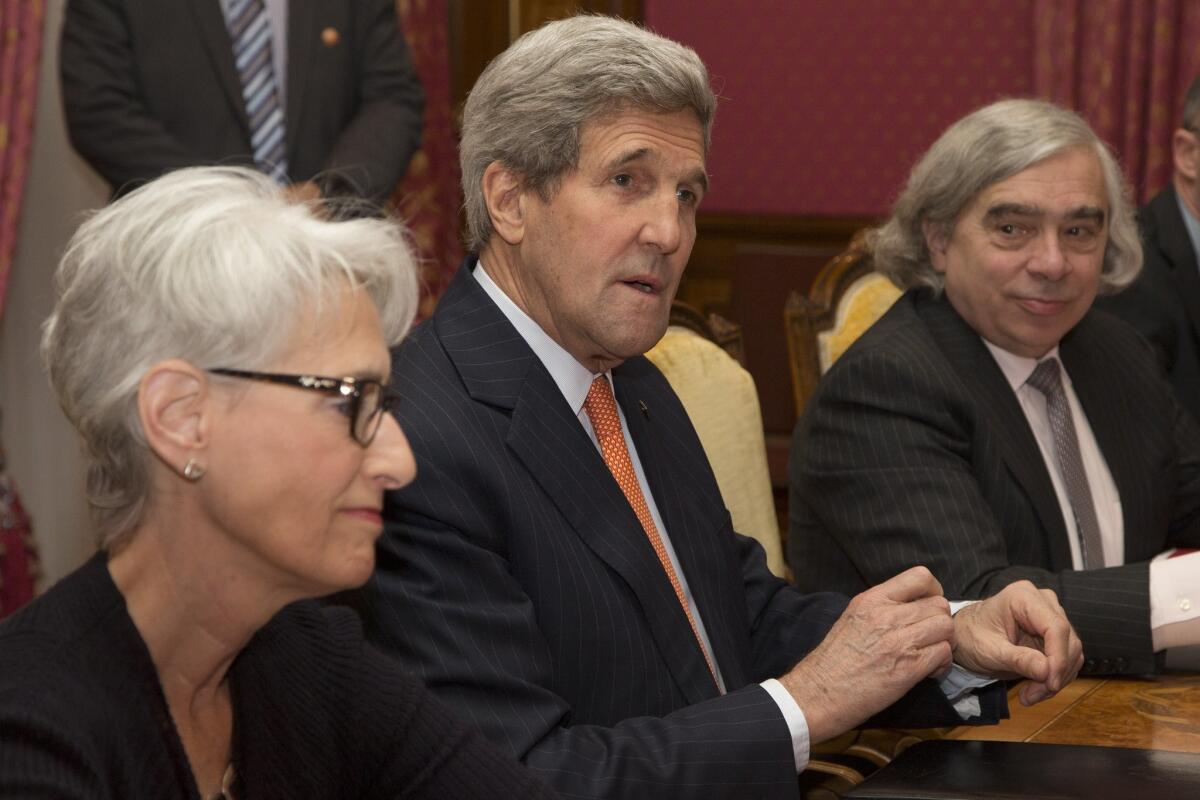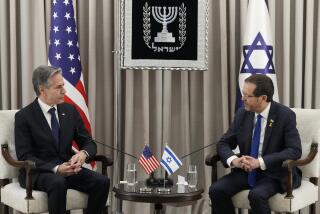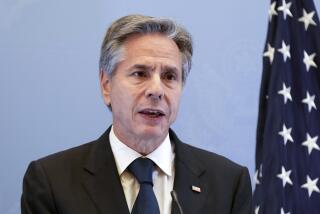Iran nuclear talks hit bumps; U.S. foresees lasting curbs on Tehran

High-level negotiations over Iran’s nuclear program appeared to slow on Thursday, and U.S. officials said any potential agreement would restrict Tehran’s nuclear activities longer than 10 or 15 years, the expected duration of the pact.
Diplomats from Iran, the United States and five other world powers are trying to complete the outline of a deal by the end of March. But the group still hasn’t begun working from a draft and continues to debate major issues, a senior U.S. official said.
Negotiators are “still a distance” from a deal, Iranian Foreign Minister Mohammad Javad Zarif told reporters.
In Washington, Deputy Secretary of State Antony Blinken sought to ease concern that Iran would be free to build a nuclear weapon when the expected agreement expires in a decade or more.
Blinken said Iran’s nuclear activities would face a variety of restrictions indefinitely, including tough monitoring and inspections, to thwart any attempt by Tehran to build a bomb.
“Some constraints would be removed after a significant period of time, others would remain in effect even longer, and some would last indefinitely, including a stringent and intrusive monitoring and inspections regime,” Blinken told the House Foreign Affairs Committee.
The United States, France, Britain, Germany, Russia and China have been negotiating with Iran for 18 months for a deal that would ease economic sanctions on Iran if it agrees to verifiable limits on enriching uranium and other nuclear activities.
The duration of those restrictions has been controversial from the start. Israeli Prime Minister Benjamin Netanyahu, a fierce critic of a deal, warned Congress in a blistering speech March 3 that a decade is only “the blink of an eye.”
Blinken said the end date of the deal hadn’t been finalized. Iran has sought an end to the deal and all restrictions on its nuclear program in seven years.
Rep. Ed Royce (R-Fullerton), chairman of the House committee, said Thursday that he doubted inspections and other long-term restrictions would prevent Iran from gaining a bomb-making capability should it choose to do so.
He said Iran has been violating its commitments under the Nuclear Nonproliferation Treaty for years. Iran says its nuclear program is only for civilian purposes.
The negotiators are expected to allow Iran to keep 6,000 to 8,000 centrifuges, out of 19,000. The fast-spinning machines are used to purify uranium to fuel reactors for electricity or, at higher grades, nuclear weapons.
The expected deal also would impose a cap on Iran’s stockpile of enriched uranium to try to ensure Tehran couldn’t accumulate enough fuel to produce a single bomb in less than a year, the so-called breakout period.
The mood of the talks in this upscale lakeside city took a turn for the worse after earlier upbeat announcements.
A senior European official, speaking on condition of anonymity to discuss the closed-door talks, said his government was unhappy with the terms on the table and could not support them in their present form. He told reporters that a variety of issues remain to be settled.
Only two days ago, Ali Akbar Salehi, head of Iran’s nuclear program, said he was “very optimistic” that the group was on the verge of completing the outline deal. If they reach the so-called framework agreement, they would try to complete a detailed pact by June 30.
The senior U.S. official, in Switzerland for the talks, also sought to deflect speculation that key details have been settled, saying in a statement that “the fundamental framework issues are still under comprehensive discussion; there is no draft document being circulated.” The official spoke on condition of anonymity to discuss closed-door talks.
The shifting statements may be negotiating tactics, intended to build pressure on the other side to make concessions, or to show that one side is prepared to make a deal while the other is holding up progress.
Although the Europeans and Zarif sound gloomy, “it could be posturing,” said Ray Takeyh, an Iran specialist at the nonpartisan Council on Foreign Relations in Washington.
Many people close to the talks contend the group could resolve enough of their differences in days to claim success. The outline agreement aims to reach an understanding on the major issues, but it doesn’t seek to resolve all of the complex matters involved.
The most important outstanding issues are restrictions on Iran’s nuclear research and development, and how quickly sanctions will be lifted, especially those imposed by the United Nations, diplomats said.
But to resolve those disputes, the group might adjust the terms on other matters that have been debated and settled.
For more on foreign policy, follow @RichtPau on Twitter.
More to Read
Start your day right
Sign up for Essential California for news, features and recommendations from the L.A. Times and beyond in your inbox six days a week.
You may occasionally receive promotional content from the Los Angeles Times.







